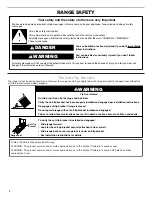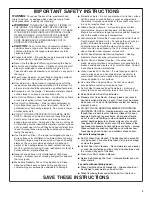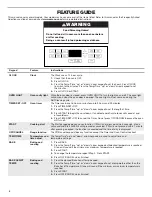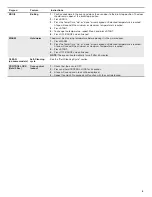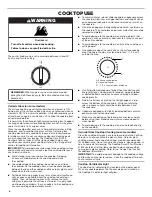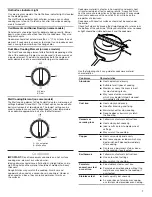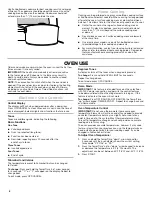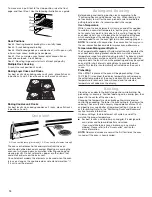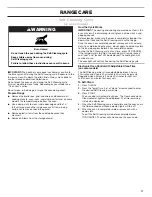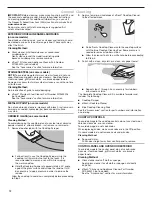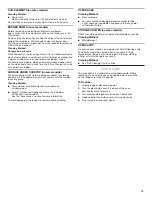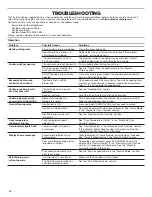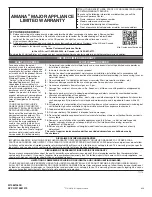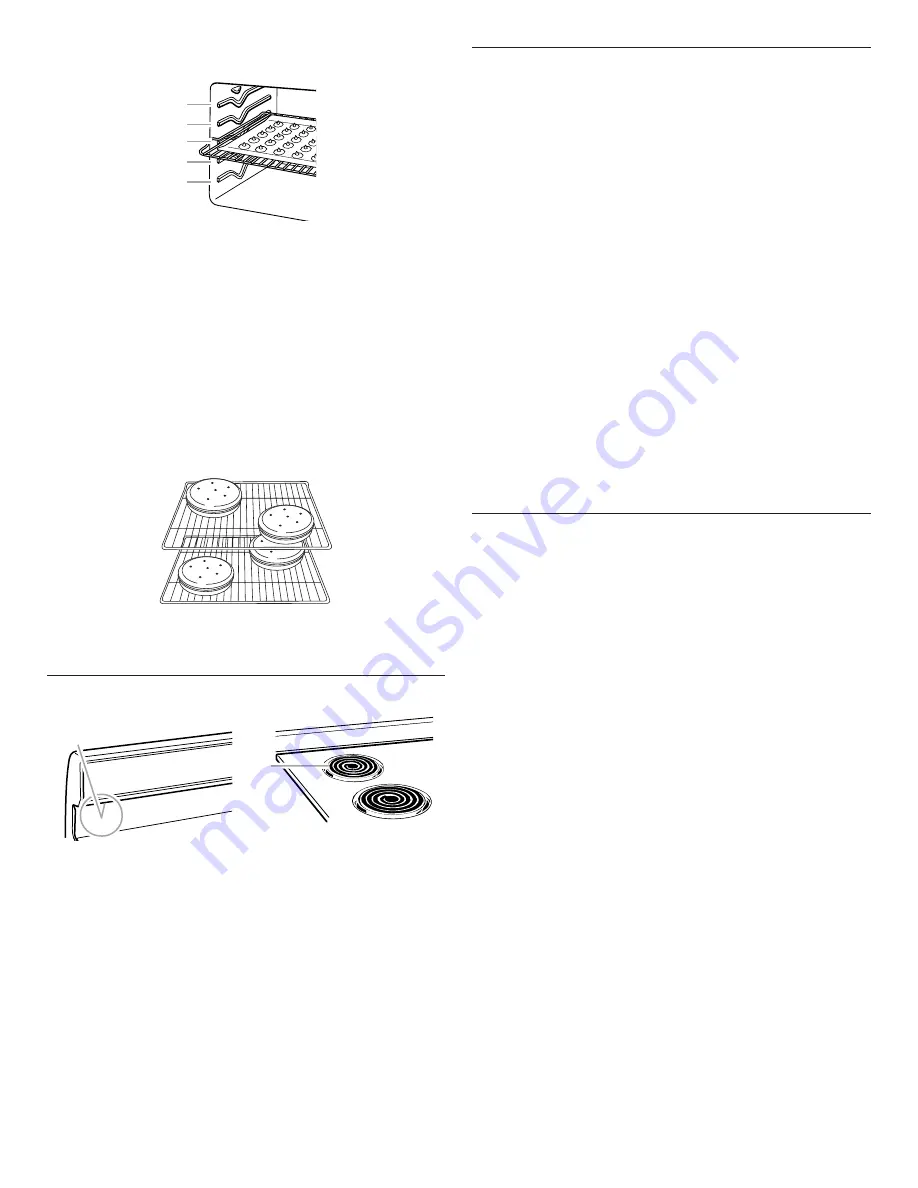
10
To move a rack, pull it out to the stop position, raise the front
edge, and then lift out. Use the following illustration as a guide.
Rack Positions
Rack 5: Toasting bread or broiling thin, non-fatty foods
Rack 4: 2-rack baking and broiling
Rack 3: Most baked goods on a cookie sheet, muffin pan, or jelly
roll pan; layer cakes; broiling chicken pieces
Rack 2: Pies, casseroles, yeast bread, quick breads, frozen
convenience foods, 2-rack baking
Rack 1: Roasting large and small cuts of meat and poultry
Multiple Rack Cooking
2-rack: Use rack positions 2 and 4.
Baking Layer Cakes on 2 Racks
For best results when baking cakes on 2 racks, place flat racks
in positions 2 and 4. Place the cakes on the racks as shown.
Baking Cookies on 2 Racks
For best results when baking cookies on 2 racks, place flat racks
in positions 2 and 4.
Oven Vent
A
A
A. Oven vent (ceramic glass model) A. Oven vent (coil element model)
The oven vent releases hot air and moisture from the oven
and should not be blocked or covered. Blocking or covering the
oven vent will cause poor air circulation, affecting cooking and
cleaning results. Do not set plastics, paper, or other items that
could melt or burn near the oven vent.
On coil element models, the element can be used when the oven
is in use as long as the cookware does not extend more than
1
/
2
"
(1.3 cm) over the element.
Baking and Roasting
Before baking and roasting, position racks according to the
“Positioning Racks and Bakeware” section. When roasting, it is
not necessary to wait for the oven preheat cycle to end before
putting food in unless it is recommended in the recipe.
Oven Temperature
While in use, the oven elements will cycle on and off as needed
to maintain a consistent temperature, but they may run slightly
hot or cool at any point in time due to this cycling. Opening the
oven door while in use will release the hot air and cool the oven
which could impact the cooking time and performance. It is
recommended to use the oven light to monitor cooking progress.
NOTE:
On models with convection, the convection fan may run in
the non-convection bake mode to improve oven performance.
Temperature Management System
The Temperature Management System electronically regulates the
oven heat levels during preheat and bake to maintain a precise
temperature range for optimal cooking results. The bake and broil
elements or burners cycle on and off in intervals. On convection
range models, the fan will run while preheating and may be cycled
on and off for short intervals during Bake to provide the best
results. This feature is automatically activated when the oven is
in use.
Preheating
When START is pressed, the oven will begin preheating. Once
100ºF (38ºC) is reached, the display temperature will increase as
the actual temperature of the oven increases. When the preheat
temperature is reached, a tone will sound and the selected
temperature will appear on the display.
Broiling
Close the oven door to the broil stop position while broiling. No
preheating is necessary. Position food on grid in a broiler pan, then
place it in the center of the oven rack.
Changing the temperature when broiling allows more precise
control when cooking. The lower the broil setting is, the slower the
cooking. Thicker cuts and unevenly shaped pieces of meat, fish,
and poultry may cook better at lower broil settings. Use racks 4
or 5 for broiling. Refer to the “Positioning Racks and Bakeware”
section for more information.
On lower settings, the broil element will cycle on and off to
maintain the proper temperature.
■
For best results, use a broiler pan and grid. It is designed to
drain juices and help avoid spatter and smoke.
If you would like to purchase a broiler pan, one may be
ordered. Please refer to the “Accessories” section for
more information.
NOTE:
Odors and smoke are normal the first few times the oven
is used or if the oven is heavily soiled.
1
2
3
4
5


